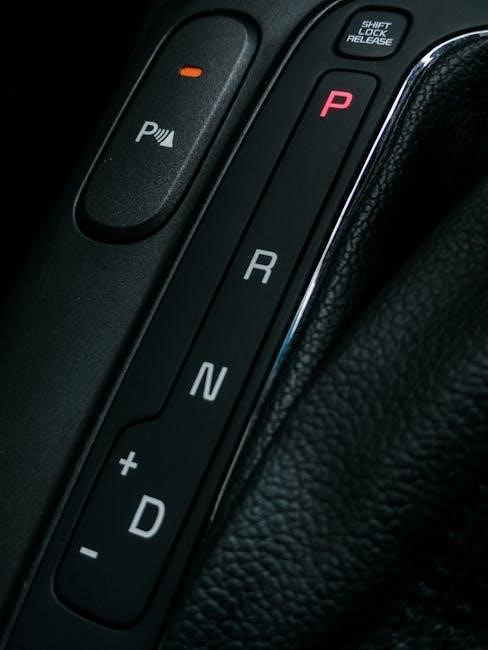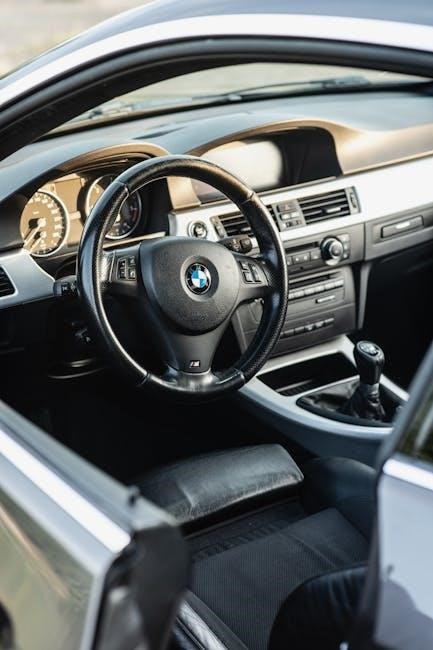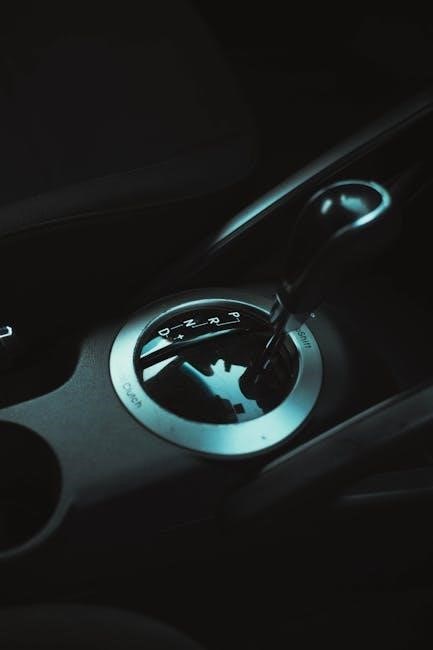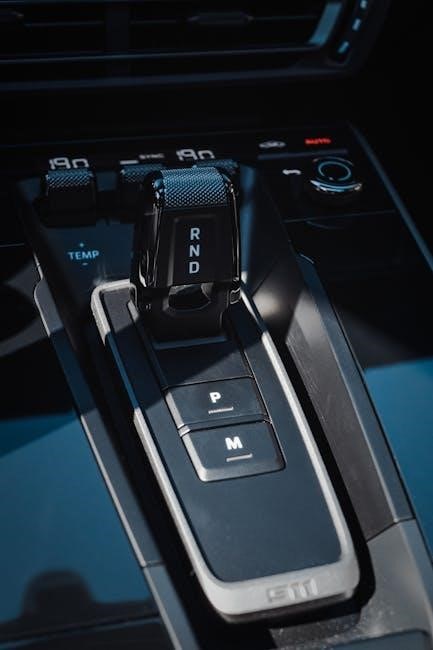manual transmission to automatic conversion

Converting a manual to an automatic transmission is a significant decision, often driven by convenience, driving conditions, or personal preference. While modern automatic transmissions offer improved efficiency and ease of use, the process involves complex steps and requires careful consideration.

Advantages of Converting Manual to Automatic Transmission
Converting a manual transmission to an automatic offers several benefits, primarily focused on convenience and ease of use. Automatic transmissions eliminate the need for manual gear shifting, making driving smoother and less physically demanding, especially in heavy traffic or hilly terrain.
- Reduced driver fatigue during long journeys or stop-and-go traffic.
- Improved accessibility for drivers who may find manual shifting challenging or uncomfortable.
- Enhanced compatibility with modern features like cruise control and adaptive driving systems.
- Potentially better fuel efficiency in certain driving conditions, as automatic transmissions can optimize gear shifts.
Overall, the conversion simplifies the driving experience while retaining the performance capabilities of the vehicle, making it a practical choice for those seeking a more comfortable and hassle-free ride.

Disadvantages of Converting Manual to Automatic Transmission
Converting a manual transmission to an automatic comes with several drawbacks that should be carefully considered. One of the primary concerns is the high cost of the conversion, which can range from $1,000 to $3,000 or more, depending on the vehicle and parts required.
- The process is complex and time-consuming, often requiring specialized tools and expertise.
- Automatic transmissions typically weigh more than manual ones, which can slightly reduce fuel efficiency and performance.
- Some drivers may feel a loss of control and driving engagement, as automatic transmissions lack the manual gear-shifting experience.
- There may be compatibility issues with certain engines or drivetrains, potentially leading to reliability problems over time.
Additionally, modern manual transmissions often achieve better fuel economy in specific driving scenarios, which could be lost with an automatic conversion. These factors make it important to weigh the benefits against the potential downsides before deciding to proceed.
Conversion Process
The conversion process involves replacing the manual gearbox with an automatic transmission, along with modifications to the clutch system, electrical wiring, and drivetrain components. Compatibility checks are essential to ensure smooth operation.
Specialized tools and expertise are required, with costs ranging from $1,000 to $3,000 or more. Professional mechanics often handle this complex procedure to avoid potential issues and ensure reliability.
Feasibility of Conversion
Converting a manual transmission to an automatic is feasible but complex, requiring careful evaluation of compatibility and costs. Modern vehicles often need advanced modifications, while older models may be simpler to convert.
The process is highly dependent on the vehicle’s make, model, and year, with compatibility checks for engine and transmission systems being critical. Electrical wiring and drivetrain adjustments further complicate the task.
While some enthusiasts successfully perform conversions, professional expertise is often recommended to avoid mechanical failures. Costs range from $1,000 to $3,000 or more, depending on the vehicle and transmission type.
For newer cars, additional modifications like sensor integration and software updates may be necessary, increasing both complexity and expense. Despite these challenges, a well-planned conversion can offer long-term benefits for drivers seeking convenience.
Parts and Tools Required
Converting a manual to an automatic transmission demands a comprehensive list of specialized parts and tools. The primary components include a compatible automatic transmission unit, torque converter, and modified drivetrain components such as the driveshaft and axle shafts.
Additional parts like an automatic transmission fluid pan, new sensors, and wiring harnesses are essential to ensure proper functionality. Tools required range from basic mechanical tools to advanced equipment like transmission jacks, hydraulic presses, and diagnostic software.
For modern vehicles, electronic control units and software updates may also be necessary to integrate the new transmission with the vehicle’s systems. The cost and availability of these parts vary depending on the vehicle’s make and model, emphasizing the need for thorough planning and research before starting the conversion process.
Ensuring all components are compatible and of high quality is crucial to avoid mechanical failures and ensure smooth operation post-conversion.
Labor and Cost Considerations
Converting a manual transmission to an automatic is a labor-intensive process that comes with significant costs. The total expense can range from $1,000 to $3,000 or more, depending on the vehicle’s make, model, and the complexity of the conversion.
Labor costs are a major factor, as the process requires specialized expertise and tools. Professional mechanics often charge high rates due to the intricate nature of the job, which includes removing the manual transmission, installing the automatic unit, and ensuring proper integration with the vehicle’s systems.
Additional costs may arise from unforeseen issues, such as compatibility problems or the need for custom fabrication. While some enthusiasts attempt the conversion themselves, the risks of errors and safety hazards make professional assistance highly recommended.
In many cases, the cost of conversion may outweigh the benefits, leading some to consider purchasing an automatic vehicle outright as a more economical option.

Modifications Needed
Converting a manual to an automatic transmission requires significant modifications, including swapping the transmission, ensuring engine compatibility, and adjusting electrical and wiring systems. Additional components like sensors, solenoids, and a torque converter may also be necessary.
Engine and Transmission Compatibility
Ensuring engine and transmission compatibility is critical when converting from manual to automatic. The automatic transmission must be compatible with the engine’s power output and torque specifications. For instance, a 4L60E transmission is commonly used with V8 engines, while a 4L30E suits smaller engines. The engine’s control unit must also be reprogrammed to communicate with the automatic transmission’s electronic controls. Additionally, the transmission’s gear ratio should match the vehicle’s intended use, whether for city driving or towing. Compatibility issues can lead to poor performance or even system failure, making it essential to consult a professional for precise matching. Proper alignment and mounting of the transmission are also vital to avoid mechanical stress and ensure smooth operation.
Electrical and Wiring Adjustments
Converting a manual to an automatic transmission requires significant electrical and wiring modifications. The automatic transmission relies on electronic controls to manage gear shifts, torque converter engagement, and other functions. This means installing new sensors, such as speed sensors and gear position sensors, to provide real-time data to the transmission control module (TCM). The vehicle’s wiring harness must be updated to accommodate these components, ensuring proper communication between the engine control unit (ECU) and the TCM. Additionally, the dashboard may need new indicators, such as a gear position display, to reflect the automatic transmission’s status. In some cases, the vehicle’s computer may need reprogramming to recognize the automatic transmission and adjust engine performance accordingly. Improper wiring can lead to system malfunctions, making it crucial to follow detailed diagrams and seek professional assistance if necessary.

Maintenance and Repair
Regular maintenance is crucial for automatic transmissions, including fluid checks, filter replacements, and inspections for leaks. Proper electronic control module function ensures smooth operation, while addressing issues early prevents costly repairs.
Regular Maintenance Checks
Regular maintenance is essential to ensure the longevity and optimal performance of an automatic transmission after conversion. Start with checking the transmission fluid level and condition, as dirty or low fluid can lead to premature wear. Replace the fluid and filter every 30,000 to 60,000 miles, depending on the manufacturer’s recommendations. Inspect for any signs of leaks around the transmission pan gasket and fluid lines. Additionally, check the electronic control module (ECM) for proper functionality, as modern automatic transmissions rely on sensors and solenoids to operate smoothly. Ensure the torque converter is securely attached and functioning correctly. Finally, have a professional inspect the transmission periodically to identify and address potential issues early. Regular upkeep helps maintain smooth shifting, prevents breakdowns, and extends the life of your newly converted automatic transmission system.
Troubleshooting Common Issues
After converting to an automatic transmission, common issues may arise, such as slipping gears, erratic shifting, or delayed engagement. These problems can often be traced to low or contaminated transmission fluid, faulty solenoids, or issues with the torque converter. If the transmission hesitates or jerks during acceleration, inspect the fluid level and condition, ensuring it meets the manufacturer’s specifications. Check for worn or damaged sensors and wiring, as modern automatic transmissions rely on electronic controls. Additionally, verify that the transmission cooler is functioning properly to prevent overheating. If problems persist, scan the electronic control module (ECM) for error codes to identify specific faults.Addressing these issues promptly can prevent further damage and ensure smooth operation. Regular inspections and professional diagnostics are crucial for maintaining the health of the converted automatic transmission system.
Converting a manual to an automatic transmission can significantly enhance driving convenience and adaptability, especially in urban environments or for drivers seeking a smoother experience. While the process is technically complex and costly, it offers benefits such as reduced driver fatigue and improved vehicle suitability for specific conditions. Modern automatic transmissions provide efficient performance and reliability, making the conversion a viable option for many. However, careful consideration of maintenance, repair, and potential issues is essential to ensure long-term satisfaction. For those prioritizing ease and comfort, this conversion can be a worthwhile investment. Ultimately, weighing the advantages and challenges beforehand is crucial to making an informed decision tailored to individual needs and preferences.





